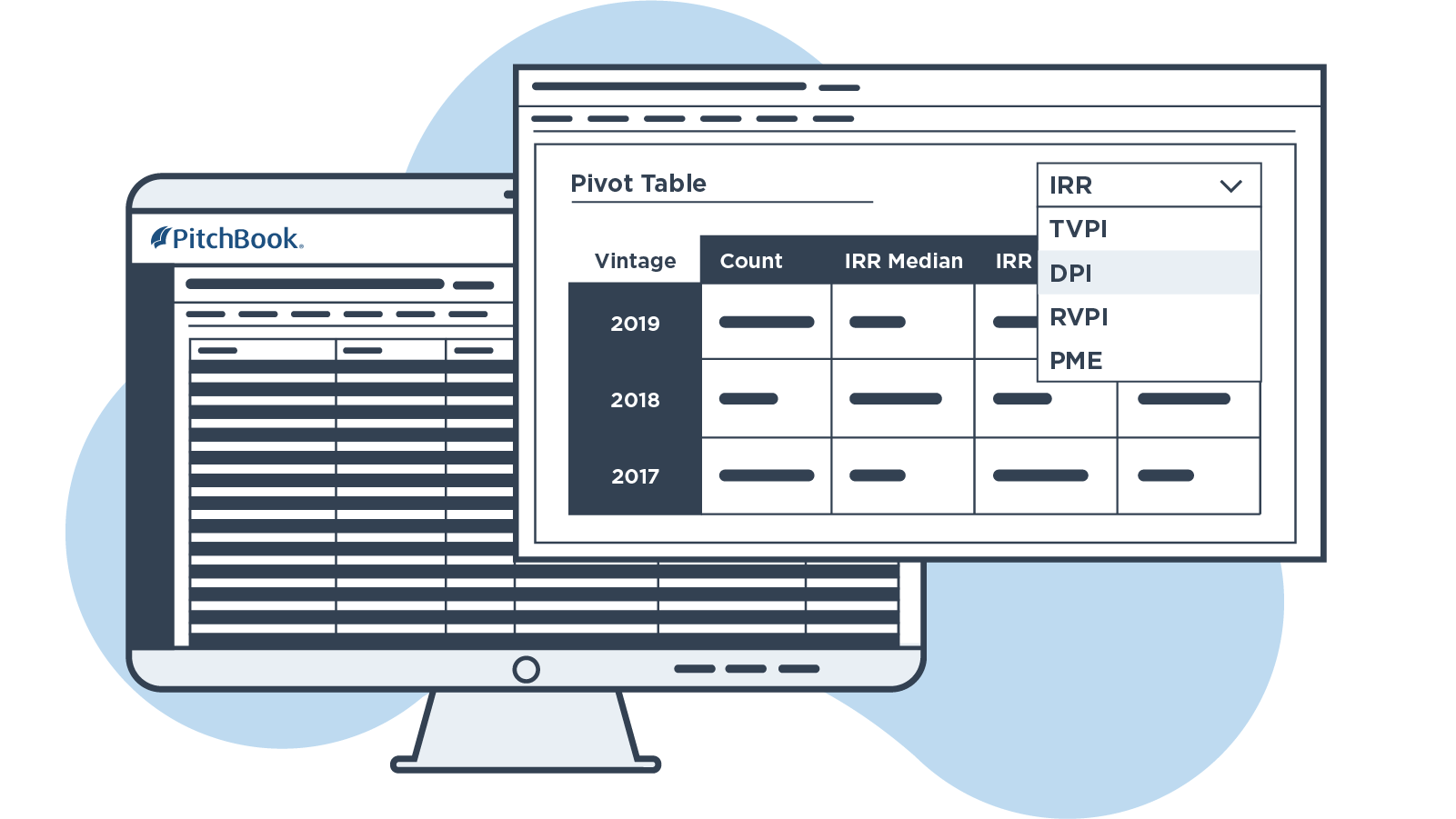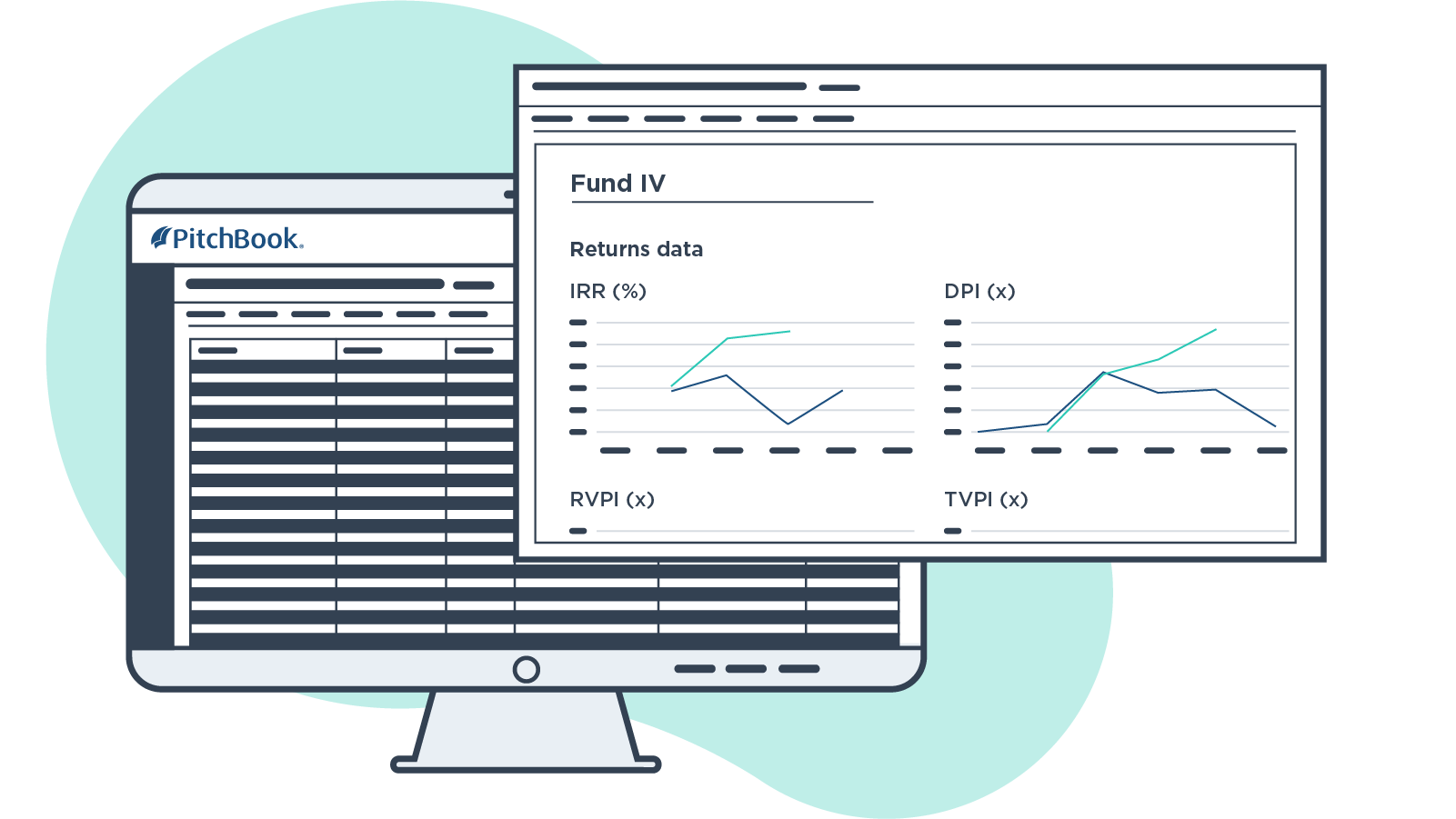Evaluate fund returns with PitchBook’s Custom Benchmarks tool
March 7, 2022A fund benchmark is a performance yardstick: It provides a standard for comparison. In the private markets, benchmark research provides a way for limited partners (LPs) and general partners (GPs) to gauge the performance of individual funds and evaluate broader performance across asset classes. However, unlike in the public markets—which have widely used indexes for different market segments, such as the S&P 500 and Dow Jones Industrial Average—the private markets have no single “standard” measure to assess financial benchmarks.
The lack of a uniform methodology for benchmark data has led to inconsistent approaches across the industry and difficulties in deciphering how well individual funds and investment strategies have performed. And the consequences of misjudging the performance of private market funds are severe. Inaccurate fund benchmarks can lead limited partners to miss investment opportunities or make poor allocation decisions. For general partners, having incomplete benchmark research makes fundraising significantly more difficult.
All of these factors create an opportunity for constructing more relevant, custom benchmarks to help inform decision-making.
The problem with third-party benchmarks
Most third-party benchmark data lacks the transparency needed to accurately decipher how well individual funds and investment strategies have performed. They don’t expose the underlying fund data they consist of, the investments those funds have made or even the performance of the component funds—meaning critical details that could be used to better evaluate performance are lost.
Building custom financial benchmarks with PitchBook
PitchBook’s Custom Benchmarks feature was designed to help you mitigate this risk when constructing private capital financial benchmarks by giving you the ability to easily tailor them to specific peer groups, strategies or geographies—to better compare performance across multiple benchmark funds and investors.
Here’s how it works.
Easily create market-specific fund benchmarks
Quickly identify the most appropriate funds for your benchmark using intuitive search criteria, including:
- Vintage year
- Fund size
- Fund type
- Fund location
You can also easily add or remove individual funds from your benchmark data to customize it further—and even pool fund vintage years to see macro-level data trends across the most relevant benchmark funds and investors.

Visualize the data to quickly understand differences and trends in fund performance
Create detailed charts, graphs and pivot tables with only a few clicks to easily compare key performance metrics, including:
- Internal rate of return (IRR)
- Total value to paid-in (TVPI)
- Distributions to paid-in (DPI)
- Remaining value to paid-in (RVPI)
Then, simply download your data visualizations as a PNG file, export your datasets to Excel or share your custom benchmark with others on your account using PitchBook’s Collaborative Lists feature.

See the underlying fund data for each benchmark
Once you’ve constructed your custom financial benchmark, you can also access the returns data of the individual funds included within it—and even see data on each fund's investments as well as the associated liquidity events—so it’s simple to pinpoint how a fund is generating returns. Then just as easily click and drag outliers to remove them from the list.
Additional benchmarking tools from PitchBook
Benchmark funds
Fund comparison is easier than ever with Benchmarked Funds from PitchBook. Part of Custom Benchmarks, the offering empowers users to visualize the performance of individual benchmark funds by comparing them to up to ten funds for relative performance analysis.
Armed with a fund’s context relative to its peers and the benchmark—essential insights for both LP asset allocation and GP fundraising.
Fund terms and fees
Also part of the PitchBook Benchmarks feature, Fund Terms & Fees provides two important functionalities: First, it gives PitchBook clients the ability to display six fund term and fee metrics—including management fee, carry, investment term, fund term, hurdle rate and GP commitment. Additionally, it also gives users the ability to display a secondary index.
For LPs and GPs, Fund Terms and Fees provide an additional layer of transparency and flexibility when evaluating fund managers and conducting market analysis. LPs can leverage this functionality to evaluate what fee structures currently exist at funds, and GPs can get a better sense of how their fees compare to peers.
Custom fund benchmarking FAQ
Why does custom financial benchmarking matter?
Private market funds operate very differently from almost every other investment strategy. They’re closed-end vehicles, so a lot of the traditional public market metrics that people use—whether for broad equities, a mutual fund or a hedge fund—aren’t appropriate. Many private capital benchmarks are problematic though because they’re based on basic attributes like vintage year, fund type (PE, VC, etc.), fund size and high-level location. These slices are often too broad for an adequate comparison.
Despite these shortcomings, LPs and GPs often spend a significant amount of time trying to make generic third-party benchmarks work for the specific comparisons they’re interested in.
These premade benchmarks have their purposes, of course—they do give a general sense of how an investment strategy is performing without the need for significant benchmark research. But when these benchmarks are used to make comparisons between specific funds and fund strategies, they often force LPs and GPs to make decisions based on incomplete benchmark data—a risk that could be mitigated if they had the ability to create custom benchmarks on their own.
What are the benefits of benchmarking?
It’s all about transparency. Investors need insight into benchmark data to determine if it is suitable for their purposes or if a more tailored approach is needed for an appropriate comparison. Many third-party providers don’t disclose the underlying funds their benchmarks consist of, the investments those funds have made or even the performance of the component funds.
This lack of transparency can leave important questions unanswered. For example, are the comparison funds investing in the same types of companies? Or even the same industries? In the end, financial benchmarks that lack transparency could result in the loss of critical details that could have been used to better evaluate performance.
What should be included in a custom fund benchmark?
In addition to the usual information third-party private market benchmarks provide on vintage year, fund type, fund size and location, consider also finding better comparisons by examining:
- Portfolio construction
- Investment mandates
- Industry and/or sector focus
- Narrower definitions on fund size and location
All of these factors can be helpful for creating a more accurate understanding of fund performance—which ultimately leads to better investment decisions.
More about private market benchmarking
Get a better sense of fund performance relative to broader asset classes and other private market strategies
Download our most recent PitchBook Benchmarks report
Learn how to make smarter allocations with better benchmarks
Watch our video about PitchBook for benchmarking and asset allocation
See how you can leverage PitchBook for fundraising
Download our fundraising guide
Ready to explore PitchBook’s Custom Benchmarks?
Not a PitchBook user yet? Request a free trial.
Comments:
Thanks for commenting
Our team will review your remarks prior to publishing.
Please check back soon to see them live.